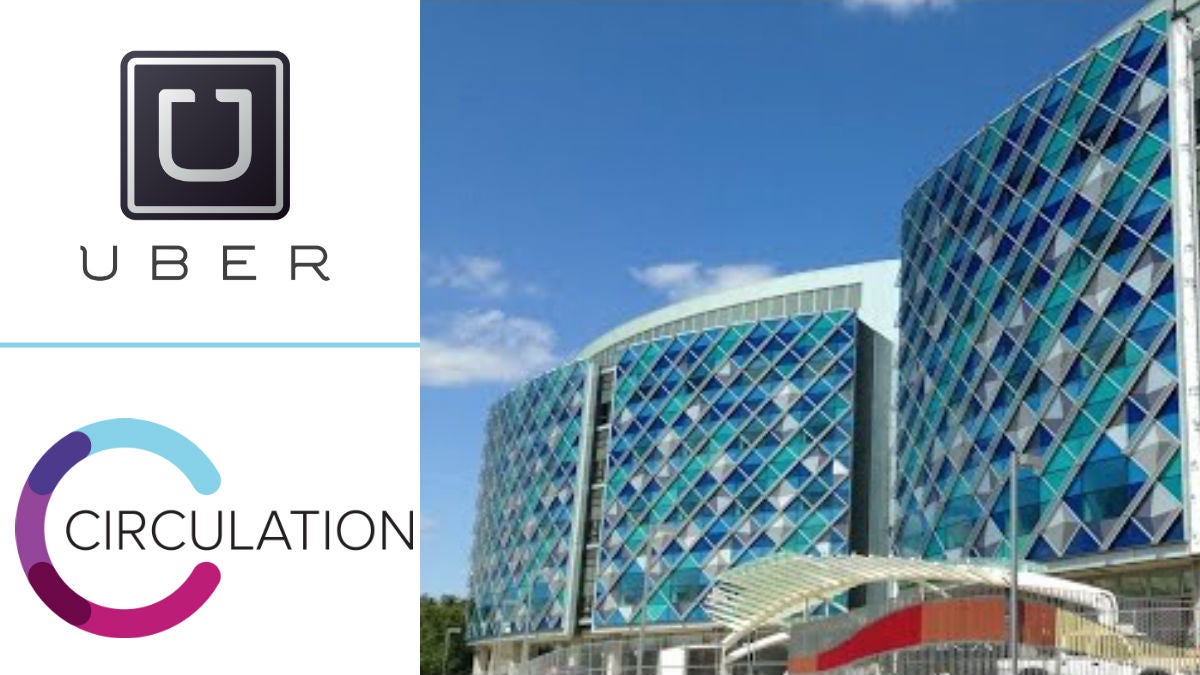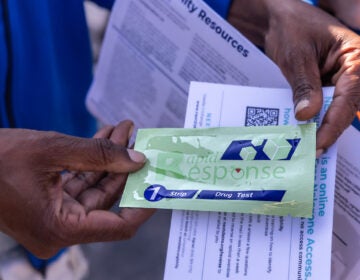Delaware children’s hospital partners with Uber on patient rides

(File/WHYY)
A.I. duPont Hospital for Children in Wilmington is working with Uber to provide transportation services to its patients.
Patients across the country often are late to, or miss, doctor’s appointments, because transportation services they need to get around are sometimes unreliable.
It’s a problem patients at Alfred I. duPont Hospital for Children in Wilmington face regularly.
But now the hospital is one of three in the country working with a special Uber service, in hopes of reducing missed and late appointments for families that don’t have cars, or don’t have reliable transportation.
“The flexibility and quick response time and structure of the way this is organized will provide more flexibility and better service for patients and families to get to health care appointments on time,” said Ed Woomer, administrator for patient and family services at the hospital.
The service was designed by Circulation, a platform that connects hospital systems with Uber’s infrastructure in order to better provide access to the health care system to patients who don’t have readily available transportation.
“Billions of dollars are spent each year on getting patients to their appointments, and yet 4.5 million patients each year don’t make their appointments due to transportation,” said Dr. John Brownstein, co-founder of the technology.
The service is piloting at Boston Children’s Hospital, Mercy Health System’s three acute-care hospitals and all-inclusive care program for the elderly in Pennsylvania and A.I. Circulation’s service is expected to roll out across six additional states in 2016. A.I. plans to start utilizing the service in October.
Late and no-show appointments occur every day at A.I., and no-show rates can be as high as 20 percent, Woomer said.
While there are several transportation systems in place, such as buses, taxis and rides specifically for the healthcare system, many of them are at capacity, are sometimes late or don’t show up at all and require 48-hour notice—something that isn’t always possible for patients with serious conditions, Woomer said. He said when a patient is late, they sometimes don’t see a doctor at all or have to wait until the last appointment of the day.
Some transportation services require patients to give drivers a particular hospital pick-up time, and when the patient’s appointment doesn’t finish on time the driver must move onto their next appointment, leaving the patient without transportation, Woomer said.
In other cases, children arrive in an ambulance and they have no way of getting back home, he said. Others come into the emergency room via ambulance at early hours of the morning and can’t get home because services aren’t available at odd hours, Woomer said.
Transportation can be particularly challenging for patients traveling a long distance—60 percent of A.I. patients live out-of-state, he said.
“Children who are medically complex, who are coming here for 4, 5, appointments in the same day, and that it’s imperative they be here and be here on time—that’s a population we know can be challenged by other systems in place, especially when they come from a distance,” Woomer said.
No-show and late appointments directly affects the patient and their family, he said.
“It affects patient care. For some patients with ongoing medical needs it affects their health,” Woomer said. “Sometimes, when families are late because transportation is late it affects their employment—they have to get back to work.”
No-show appointments also affect the hospital system, he said. When a patient doesn’t arrive without notice, there’s not enough time for the hospital to fill an empty space with a patient on a waiting list, Woomer said.
“You can’t just call a family and say, ‘Can you be here in an hour because someone didn’t show?’” he said. “It affects productivity in the system, and it affects others who are trying to get access to care that have to wait longer—when they could have been in sooner.”
The Circulation and Uber partnership allows the hospital to schedule or book transportation through Uber’s existing service, and guarantee the patient gets to his or her appointment. Patients don’t need a smart phone—a landline will do. Uber rides also can cost 40 percent less than other services.
“Patients are less likely to want to come to their appointment if they have difficulties getting there,” Brownstein said. “If it has to take them an hour or two hours to get to an appointment because they’re waiting for a car or existing transportation options, they’re less likely to make their appointment and adhere to important healthcare that might save their lives down the road.”
WHYY is your source for fact-based, in-depth journalism and information. As a nonprofit organization, we rely on financial support from readers like you. Please give today.





